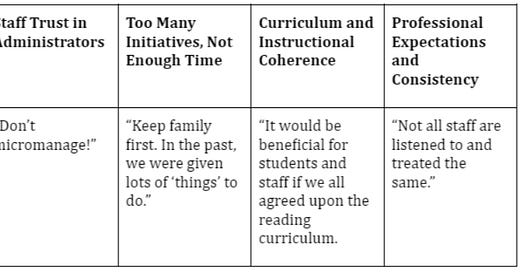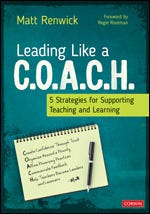The following is an adapted excerpt from my new book, Leading Like a C.O.A.C.H.: Five Strategies for Supporting Teaching and Learning (Corwin, 2022). Colleagues and I will be writing original posts to the book next month. Subscribe and join us!
Think about the last business you went to for groceries, home supplies, or to purchase a gift for someone.
Why did you shop there?
We rarely think about these choices. But the likely reason is you trust the business to provide a quality product or service at a fair price. Your trust is supported by your confidence in their capacity to meet your needs.
This is competence.
Competence is being perceived as able to produce regular results. Competence can be augmented with compassion, such as offering to take your groceries to the car. Communication through advertising and messaging can remind us about a business’s ability to deliver on the goods or services promised. But these elements of trust ring hollow if promises and responsibilities are not fulfilled.
In the context of supporting teaching and learning, competence becomes more complex in both how leaders achieve results and in how they are perceived by others through this lens. For example:
In any school, you may find a teacher or two wanting to be directed on what to teach readers and writers, how to teach them, and when.
A few others prefer complete autonomy, to be able to shut their door and do their work.
The majority want both direction for a schoolwide goal and some authority to make decisions on behalf of their students.
These varied agendas can complicate our capacity to lead and decrease our own sense of competence and confidence.
Idea: Using routines to support and learn about the school culture
As leaders, we want to create a safe space to surface people’s concerns, questions, and suggestions.
One way is through routines, such as the protocols found at the School Reform Initiative (www.schoolreforminitiative.org). They provide structure to glean insights into how the faculty feel about and view the current school climate. The leader, in response, can use this information to systematically address issues either on their own or with teams.
We build trust by doing what we will say we will do, as well as working together to accomplish these tasks. As Megan Tschannen-Moran, author of Trust Matters, notes:
“Pursuing small, early wins on some key tasks can help build trust in both the principal’s and the school’s competence” (2014, pg. 257).1
One example is when I first came to my current school, in Mineral Point, Wisconsin.
My superintendent at the time, Luke Francois, recommended that I start my tenure by listening to the staff and offering support for addressing issues. He suggested the idea of an open suitcase at a staff meeting.
Staff could write down their anonymous concerns on slips of paper, fold them up, and put them in the suitcase.
Once ready, I closed the suitcase in front of them.
Then I announced, “Thank you for sharing these with me. I plan to read each one, as well as to organize these concerns and suggestions around central issues I can address now and in the future. Also, please note that now that you have shared these with me, you no longer need to worry about them so much.”
The concerns were specific and helpful in understanding the current school situation. Next are a few of their comments under different themes I discovered from my review.
For the rest of that first school year and beyond, I created a list around these concerns. I would work toward addressing one issue, find a way to make the results visible, and then share these results publicly as a schoolwide celebration such as in my newsletter.
Instructional walks also develop a perception of competence. Teachers participate in dialogue around their practice and feel like the professionals they are. We learn from each other, see past our singular roles of teacher or leader, and engage in continuous learning which leads to an increase in trust in others and confidence in ourselves.
To learn about Megan’s work around trust in schools, check out my conversation with her below.















Share this post